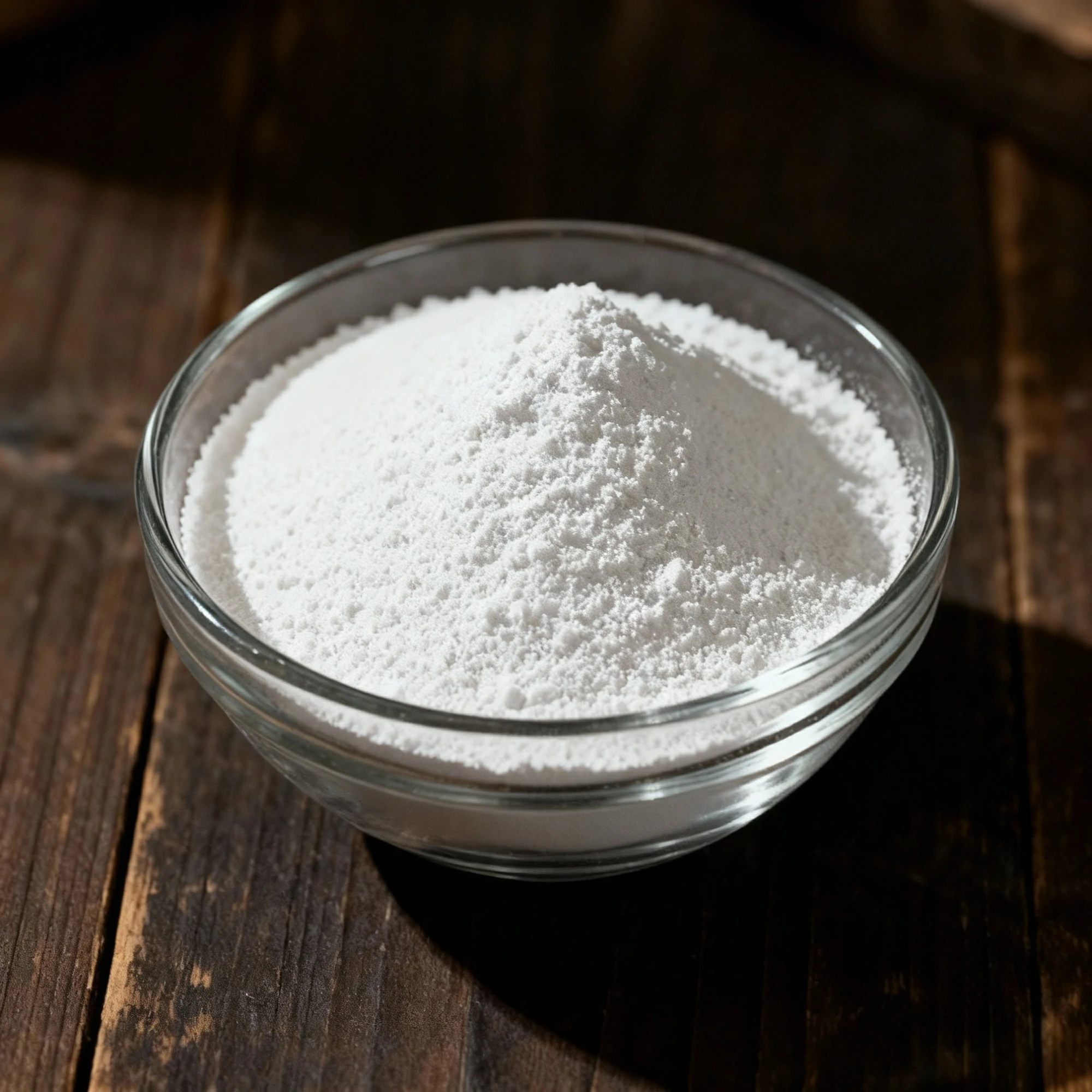

Magnesium Carbonate
One unit of:25kg/bag
Product Info
What is Magnesium Carbonate?
Magnesium Carbonate is a white, odorless mineral compound widely used in the food industry as an anti-caking agent, a color stabilizer, and a supplemental source of magnesium.
How is Magnesium Carbonate made?
| Step No. | Production Stage | Key Action | Control Point & Note |
|---|---|---|---|
| 1 | Slurry Formation | React high-purity magnesium oxide (or a magnesium salt solution) with water to form a magnesium hydroxide slurry. | The purity of raw materials is fundamental. Control the slurry concentration and temperature during this slaking process to ensure a consistent reaction base. |
| 2 | Carbonation / Precipitation | Introduce carbon dioxide (CO₂) gas into the magnesium hydroxide slurry under controlled conditions to precipitate hydrated magnesium carbonate. | This is the most critical step. The rate of CO₂ addition, reaction temperature, and pH directly determine the final product's physical properties, such as its bulk density (light vs. heavy). |
| 3 | Filtration & Washing | Separate the magnesium carbonate precipitate from the mother liquor using a filter press or centrifuge. Wash the resulting solid cake with purified water. | Thorough washing is essential to remove soluble impurities (e.g., chlorides, sulfates) that would affect the final purity. The number of wash cycles is a key control parameter. |
| 4 | Drying | Dry the washed filter cake in an industrial dryer (e.g., spray dryer, flash dryer) to remove residual moisture. | The drying temperature and time must be carefully controlled. Excessive heat can cause the magnesium carbonate to decompose into magnesium oxide, altering its chemical properties. |
| 5 | Milling & Classification | Mill the dried product to reduce its particle size and then pass it through sieves to ensure a uniform and specified particle size distribution. | Particle size analysis is performed to ensure the product meets customer specifications for texture and flowability. Mill settings and sieve mesh size are precisely controlled. |
| 6 | Quality Control & Packaging | Test the final powder for chemical purity, physical properties (bulk density, particle size), heavy metals, and other specified parameters. Package the approved product. | Final product must conform to standards like USP/BP/FCC. Packaging is conducted in a controlled environment to prevent moisture absorption and contamination. |
Technical Specifications
| CAS Number | 546-93-0 |
| Chemical Formula | MgCO₃ |
| Solubility | very slightly soluble in water; soluble in acids |
| Storage Conditions | store in cool, dry, ventilated area, protect from moisture |
| Shelf Life | 36 Months |
Applications & Usage
Common Applications:
Mechanism of action:
| Parameter | Magnesium Carbonate |
|---|---|
| Functional Category | Anti-caking Agent; pH Control Agent; Color Retention Agent; Firming Agent |
| Key Ingredients | Magnesium Carbonate (MgCO3) |
| Mechanism of Action | Coats individual particles of powdered products to prevent agglomeration by absorbing ambient moisture; acts as a mild alkali to neutralize excess acid and buffer system pH; provides magnesium ions (Mg2+) to stabilize chlorophyll molecules, preventing pheophytin formation; interacts with pectic substances in plant tissues to form cross-links, reinforcing structural integrity. |
| Application Effect in Product | Ensures free-flowing properties in salt, spices, and powdered mixes; stabilizes pH in processed foods and confections; preserves the bright green color in canned or processed vegetables; improves texture and firmness in canned fruits and vegetables; acts as a processing aid and mineral source. |
Comparison:
| Product Name | Category/Type | Key Features | Strengths (vs peers) | Weaknesses (vs peers) | Best Use Cases | Why Choose |
|---|---|---|---|---|---|---|
| Magnesium Carbonate (Gym Chalk) | Drying Agent / Grip Enhancer | Inorganic salt (MgCO₃), highly hygroscopic, available as block, powder, or ball. | Superior moisture absorption, industry standard for grip sports, provides excellent friction. | Creates significant airborne dust, can be messy, requires frequent reapplication. | Rock climbing, gymnastics, weightlifting, powerlifting. | For proven, maximal moisture absorption and a reliable dry grip in high-performance settings. |
| Liquid Chalk | Suspension-Based Grip Enhancer | Magnesium carbonate suspended in a fast-evaporating alcohol base. | Minimizes airborne dust, provides a durable base coat, less messy application. | Requires time to dry, alcohol can excessively dry out skin, may feel less substantial than loose chalk. | Gyms with chalk restrictions, as a base layer for climbing, pole fitness. | To get the benefits of magnesium carbonate without the mess and airborne particles. |
| Calcium Carbonate | Drying Agent / Filler | Inorganic salt (CaCO₃), less hygroscopic than magnesium carbonate. | Very low cost, widely available. | Poor moisture absorption, can become slick when mixed with sweat, often a filler in low-quality chalk. | Casual recreational use, school gyms, applications where budget is the main concern. | When cost is the only priority and high-performance grip is not required. |
| Rosin | Tackifier / Grip Enhancer | Solid resin from pines; creates stickiness through friction and heat. | Provides a sticky/tacky grip rather than a dry one, effective for specific sports. | Does not absorb moisture, builds up on surfaces, banned in many climbing gyms and sports. | Baseball (batters, pitchers), bowling, some aerial arts. | When a tacky grip is needed to enhance hold, not a dry grip to combat sweat. |
| Silica-Based Grip Enhancers | Synthetic Drying Agent | Formulated with amorphous silicon dioxide, sometimes mixed with other agents. | Extremely effective at moisture absorption, can be less irritating to some skin types. | Significantly more expensive than traditional chalk, performance varies by brand. | High-performance sports for users seeking alternatives to MgCO₃ due to skin sensitivity or performance needs. | For a premium, potentially longer-lasting grip aid that may be gentler on the skin. |
Technical Documents
Available Documentation
COA and monographs available
Safety Data Sheet (SDS)
MSDS available
Certificate of Analysis (COA)
Quality assurance documentation
Technical Data Sheet
Detailed technical specifications